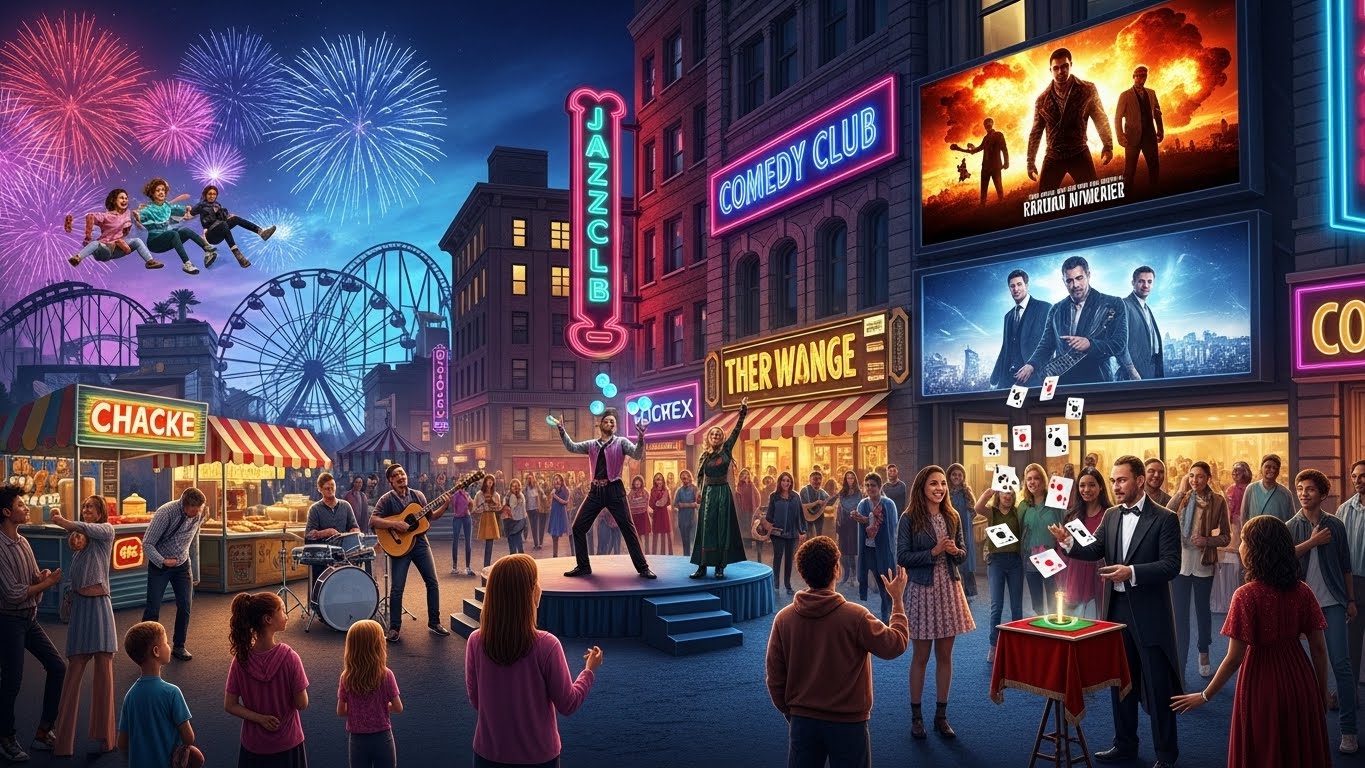Introduction: The Power of Video Games in Today’s World
In recent years, video games have evolved from being a mere pastime into a major cultural and social phenomenon. What began as simple pixelated images on screens has grown into an immersive form of entertainment that shapes communities, influences art, and even impacts global economies. Gaming is no longer just about “playing”; it’s about connecting with others, experiencing intricate narratives, and exploring vast digital worlds. Whether it’s the thrill of victory in an online battle, the joy of discovery in a role-playing game, or the challenge of mastering a new skill, video games have become an integral part of modern life.
In this post, we’ll explore how video games have expanded their influence beyond mere entertainment, how they’ve become a tool for learning, and what the future holds for this ever-evolving medium.
The Social Side of Gaming: Connecting Through Play
One of the most significant transformations in the gaming world is the rise of multiplayer experiences. While gaming used to be a solitary activity or a group activity with friends gathered in the same room, today’s gamers can connect with people across the globe. Online multiplayer games like Fortnite, Call of Duty, and League of Legends bring people together in virtual spaces, allowing them to team up, compete, and socialize in ways that were unimaginable just a few decades ago.
This shift has turned gaming into a social platform, not just a form of entertainment. Players now share experiences, create content, and even build communities around the games they love. Streaming services like Twitch and YouTube have allowed gamers to become influencers, creating careers out of their gameplay. The concept of “gaming as a community” is alive and well, and it’s increasingly common to see fans from different corners of the world uniting over their shared passion for a game or franchise.
The Evolution of Game Design: From Pixels to Immersive Worlds
Game design has undergone a monumental shift in the last few decades. In the early days of gaming, developers worked with minimal graphical resources, which meant that gameplay was often simple and abstract. Over time, as technology advanced, video games transformed into more intricate experiences with rich visuals, expansive environments, and compelling narratives.
Games like The Legend of Zelda: Breath of the Wild and Red Dead Redemption 2 demonstrate the extraordinary evolution of game design. These open-world games allow players to explore vast digital landscapes, solve puzzles, engage in combat, and interact with NPCs (non-player characters) in ways that feel almost lifelike. Storytelling in games has also evolved, with more complex narratives that rival films and books in terms of emotional depth and complexity.
Today, game design is not just about creating fun mechanics but also about crafting experiences that pull players into new worlds. The integration of realistic graphics, dynamic soundtracks, and cutting-edge AI has made video games a deeply immersive medium that can evoke a wide range of emotions—from joy and excitement to tension and sorrow.
Video Games as a Learning Tool: Education Through Play
While gaming is often seen purely as a form of entertainment, it is also being recognized for its potential as an educational tool. Educational games, or “edutainment,” have been around for years, but more recently, educators and developers have recognized the potential of mainstream games to teach valuable skills.
Games like Minecraft have become popular educational tools, allowing students to learn about architecture, history, and teamwork in an engaging environment. Through creative building, resource management, and problem-solving, players can develop skills that are useful in real-world scenarios. Similarly, puzzle and strategy games like Portal or Civilization challenge players to think critically and plan ahead, fostering skills like logical reasoning and strategic thinking.
Moreover, games are now used in training environments to teach professionals. Flight simulators, medical training software, and military simulations are all examples of how gaming technology is being utilized for practical, real-world applications. In fact, many industries now recognize the power of games to foster innovation and problem-solving, which will likely lead to more widespread use of gaming in professional development.
The Rise of Esports: Gaming as a Competitive Sport
Esports, or competitive video gaming, has rapidly grown into a major industry of its own. What started as small, informal tournaments in arcades and basements has now blossomed into international competitions, with millions of viewers tuning in to watch professional players compete in games like Dota 2, League of Legends, and Overwatch.
Esports has become a legitimate career path for many, with professional players, coaches, and analysts earning significant incomes through sponsorships, prize money, and streaming. Major events, such as The International (a Dota 2 tournament) and the League of Legends World Championship, draw crowds of thousands in person and millions of viewers online, rivaling the viewership of traditional sports events.
The rise of esports has also led to the establishment of esports arenas, college scholarships, and even varsity teams. Just like athletes in traditional sports, esports players undergo rigorous training, strategizing, and teamwork to compete at the highest level. This shift has helped to further legitimize gaming as not just a hobby, but as a serious, competitive pursuit.
The Future of Gaming: Virtual Reality, Augmented Reality, and Beyond
Looking ahead, the future of gaming promises even more exciting possibilities. Virtual reality (VR) and augmented reality (AR) are poised to revolutionize how we experience games. VR technology, which has already made waves in the gaming community with titles like Half-Life: Alyx and Beat Saber, allows players to immerse themselves in fully realized virtual worlds, interacting with their environments and other players in a way that feels natural and engaging.
AR, as demonstrated by games like Pokémon Go, merges the real world with digital elements, providing a hybrid experience that encourages players to explore their surroundings while interacting with virtual objects. The combination of VR and AR technologies will likely redefine how we play games, making experiences more immersive and interactive than ever before.
Additionally, cloud gaming is set to revolutionize the industry by eliminating the need for high-end hardware. With services like Google Stadia and Microsoft’s Xbox Cloud Gaming, players can access games on any device with an internet connection, making gaming more accessible and affordable to a global audience. This will further democratize gaming, allowing players from all walks of life to experience cutting-edge titles without needing expensive consoles or gaming PCs.
Conclusion: Gaming’s Lasting Impact on Society
Video games are no longer just a form of entertainment—they have evolved into a powerful cultural force that shapes how we interact, learn, and compete. Whether it’s through the social connections formed in online multiplayer games, the educational benefits of gaming, or the rise of esports as a global industry, video games are influencing more aspects of life than ever before.
As technology continues to advance, gaming will undoubtedly continue to push boundaries, offering new ways to experience stories, connect with others, and challenge ourselves. The gaming world is far from static—it is dynamic, vibrant, and filled with endless possibilities. One thing is for sure: the influence of video games will continue to grow, reshaping culture and society in ways we are only beginning to understand.

